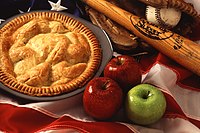This is an old revision of this page, as edited by Lembit Staan (talk | contribs) at 22:10, 8 May 2015 (→Language and cultural neutrality: rm unref). The present address (URL) is a permanent link to this revision, which may differ significantly from the current revision.
Revision as of 22:10, 8 May 2015 by Lembit Staan (talk | contribs) (→Language and cultural neutrality: rm unref)(diff) ← Previous revision | Latest revision (diff) | Newer revision → (diff) For other uses of the term, see Icon (disambiguation).| This article needs additional citations for verification. Please help improve this article by adding citations to reliable sources. Unsourced material may be challenged and removed. Find sources: "Secular icon" – news · newspapers · books · scholar · JSTOR (May 2015) (Learn how and when to remove this message) |
| This article possibly contains original research. Please improve it by verifying the claims made and adding inline citations. Statements consisting only of original research should be removed. (February 2015) (Learn how and when to remove this message) |
| This article or section possibly contains synthesis of material that does not verifiably mention or relate to the main topic. Relevant discussion may be found on the talk page. (February 2015) (Learn how and when to remove this message) |



A secular icon is an image or pictograph of a person or thing used for other than religious purpose. (See icon for such use.)
Icons versus symbols
- An icon is a graphic device that represents some object or action, the graphic device being ascribed.
- A symbol has only the meanings ascribed to itself, representing only a concept and not recognizable as a particular object.
See also
- Cultural icon
- Semeiotic, the analysis of icons and symbols.
- Symbol
References
- "Maybe icons should represent the action instead of the medium / device?". graphicdesign.stackexchange.com. Retrieved 2015-04-13.